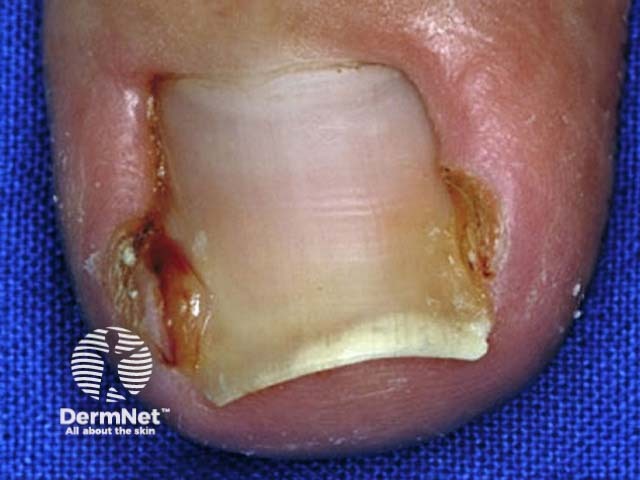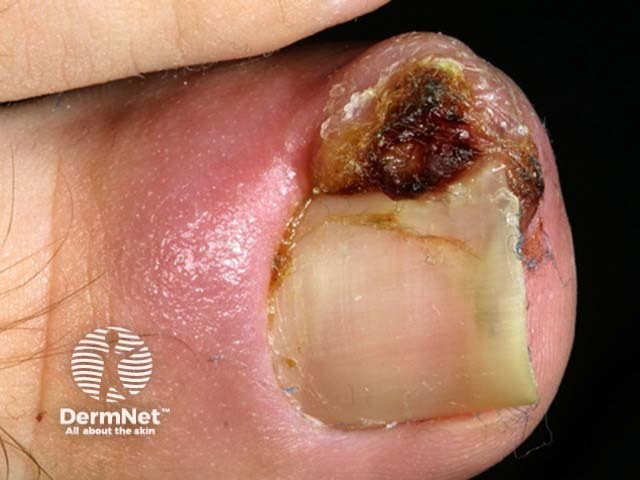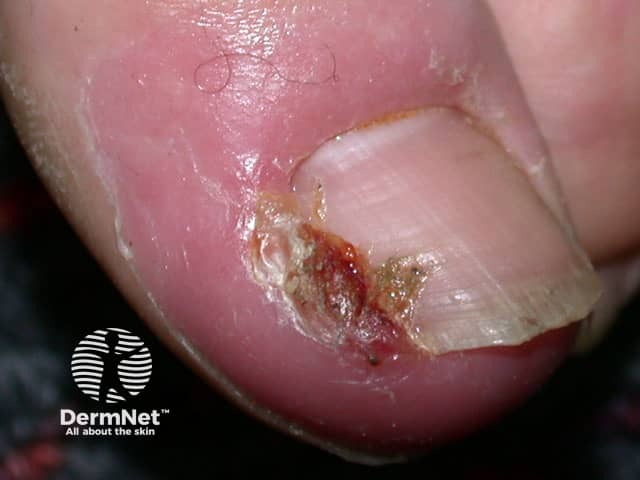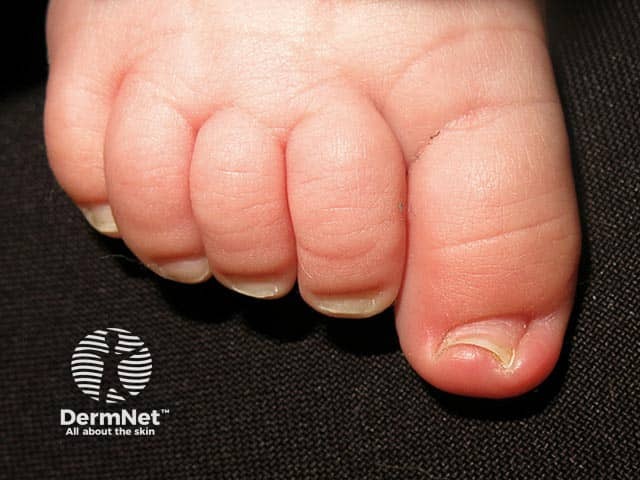Main menu
Common skin conditions

NEWS
Join DermNet PRO
Read more
Quick links
Introduction
Causes
Signs and symptoms
Treatment
Other treatment
Prevention
An ingrown toenail is a painful condition of the toe that occurs when the sides or corner of the toenail digs into the skin at the end or side of the toe. The disease mostly affects the outer edge of the big toe, although the nail on both sides of the toe, or nail on any toe can become ingrown.
An ingrown toenail is also known as onychocryptosis.
The causes for ingrown toenails are listed below, but the two most common reasons are ill-fitting shoes and improperly trimmed nails.
Ingrown toenails can be classified into three stages according to severity.
Stage 1
Stage 2
Stage 3

Ingrown toenail

Ingrown toenail

Ingrown toenail
About 2% of newborn babies are noted at birth to have ingrown toenails because the growing nail plate is very short. It is rarely painful. The appearance rights itself within a year or so.

Congenital malalignment of the big toe nail in a toddler
Treatment is dependent on the stage of the condition. However, at any stage of an ingrown toenail, the patient should avoid tight-fitting or high-heeled shoes. If possible, wear sandals until it has cleared up.
Stage 1 ingrown toenail should be managed conservatively using the following methods.
Stage 2 ingrown toenail may require the administration of topical or oral antibiotics. Topical antibiotic ointments combined with local anaesthetic agents help to heal the toe faster and also provide pain relief by numbing the affected area. Surgical removal of the ingrown toenail may be required if the condition worsens.
Stage 3 ingrown toenail is often treated surgically. The surgical technique of lateral nail avulsion plus matricectomy is highly successful. A brief description of this procedure is given below.
The following post-surgery procedures should be followed:
An ingrown toenail may also be treated by a gutter splinter using slit plastic tubing to keep the nail, and the lateral nail folds apart. These are held in place by using tape or acrylic adhesive. An artificial nail may be sculptured using formable acrylic solution.
Chemical or medical nail avulsion is a painless, slow way to remove damaged nails. As the process destroys the whole nail, it is rarely used for ingrown toenails.
Alternative surgical procedures are described, for example, removal of the surrounding soft tissue and shortening the bone of the distal phalanx.
Adhering to the following simple rules can easily prevent ingrown toenails: